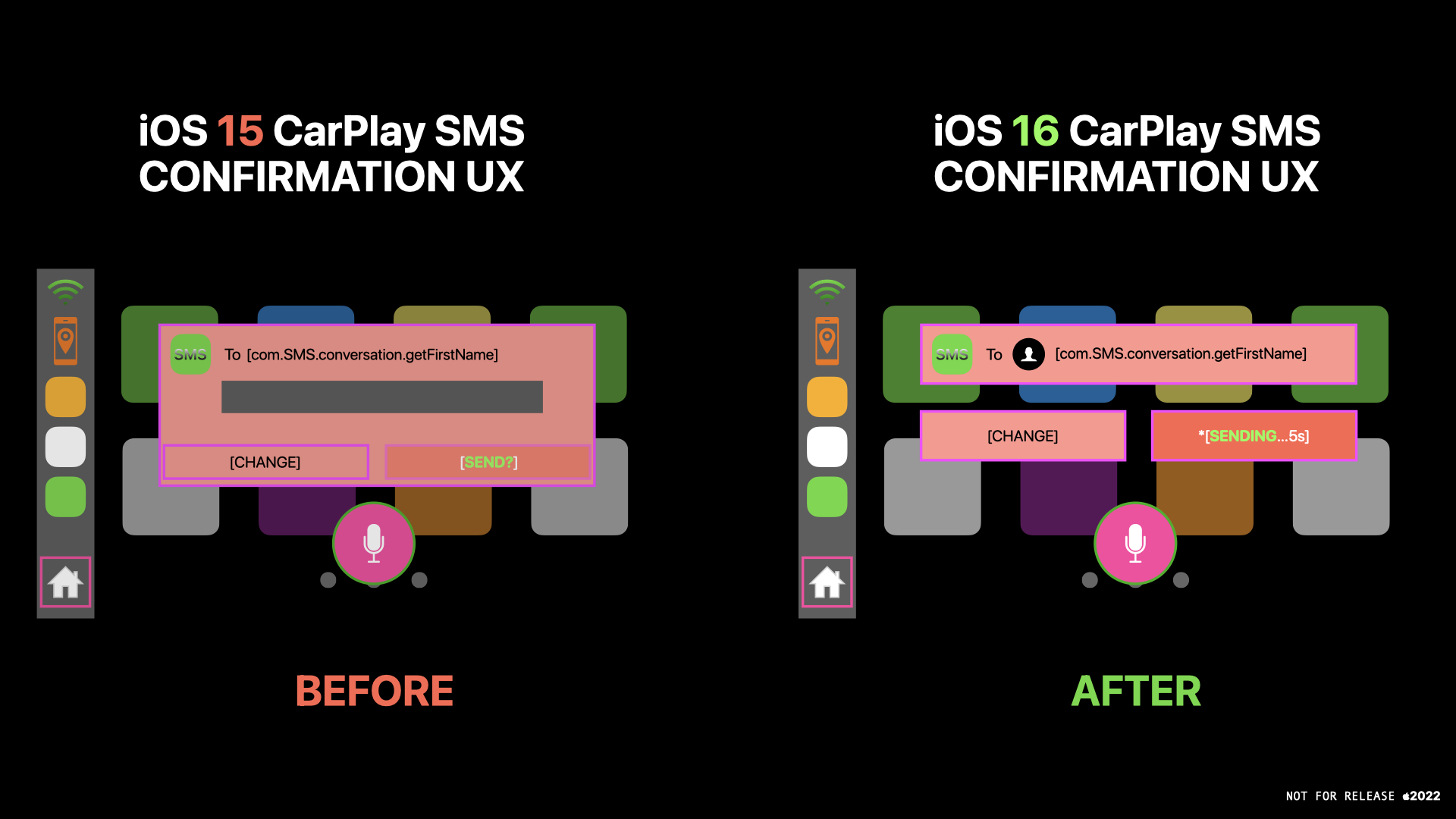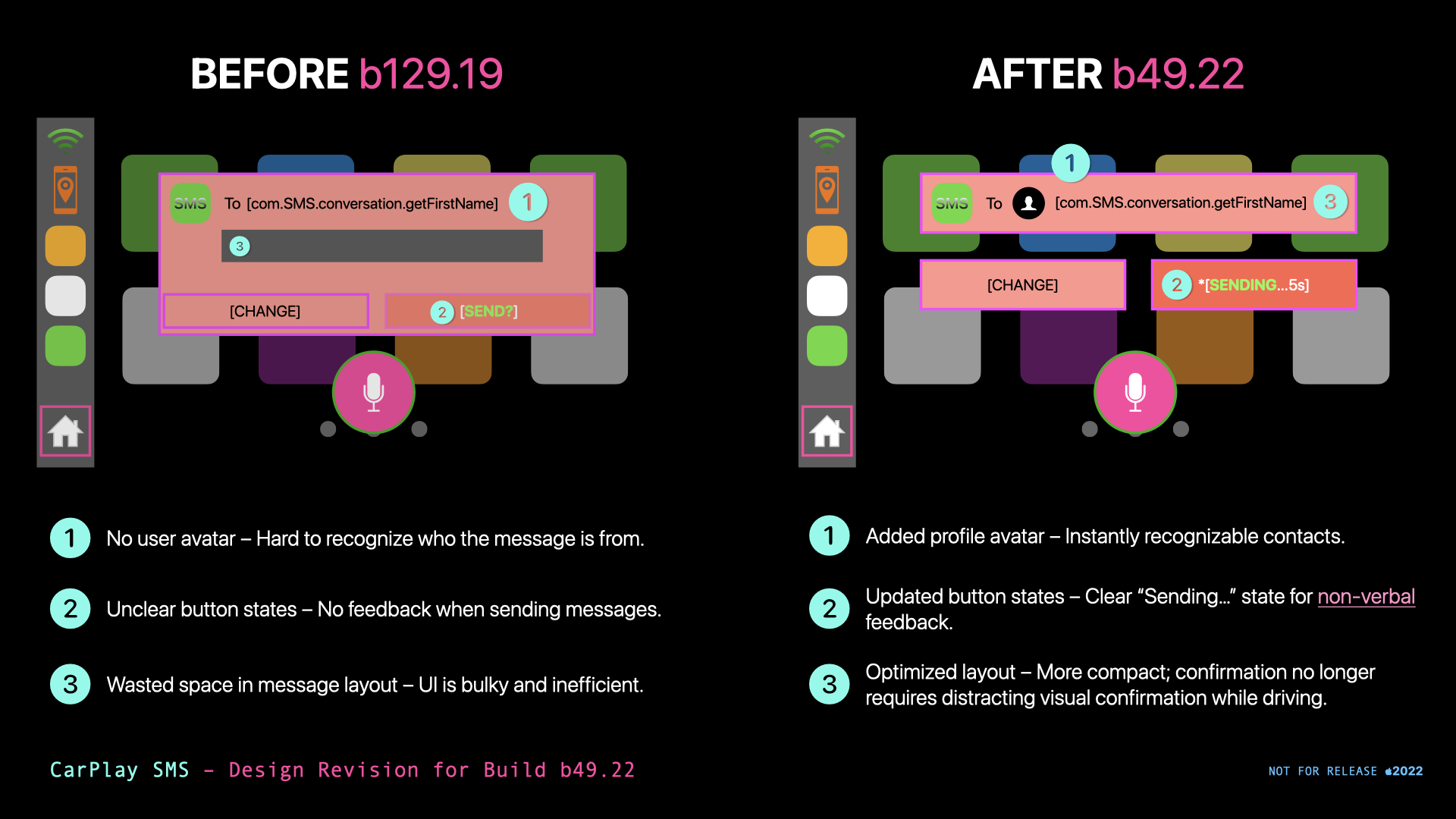iOS 15 CarPlay UI (Before) and iOS 16 CarPlay UI (After)

CarPlay SMS confirmation flow—before (legacy UI) vs. after (refined UI).
Key UX Refinements in iOS 16 CarPlay Siri

Key refinements in CarPlay SMS—profile clarity, actionable feedback, and optimized layout.
A breakdown of the refinements: sender avatars improve recognition, button states provide real-time feedback, and layout density ensures faster interaction. These refinements align with Apple’s focus on hands-free usability and reduced driver distraction.
This refinement of Siri’s hands-free SMS flow was a key milestone in improving CarPlay’s voice-first UX. By resolving key friction points—sender recognition, real-time feedback, and UI efficiency—we streamlined messaging interactions to keep drivers focused on the road. These improvements set the stage for broader Siri enhancements, including more intuitive voice-driven navigation controls in iOS 16.